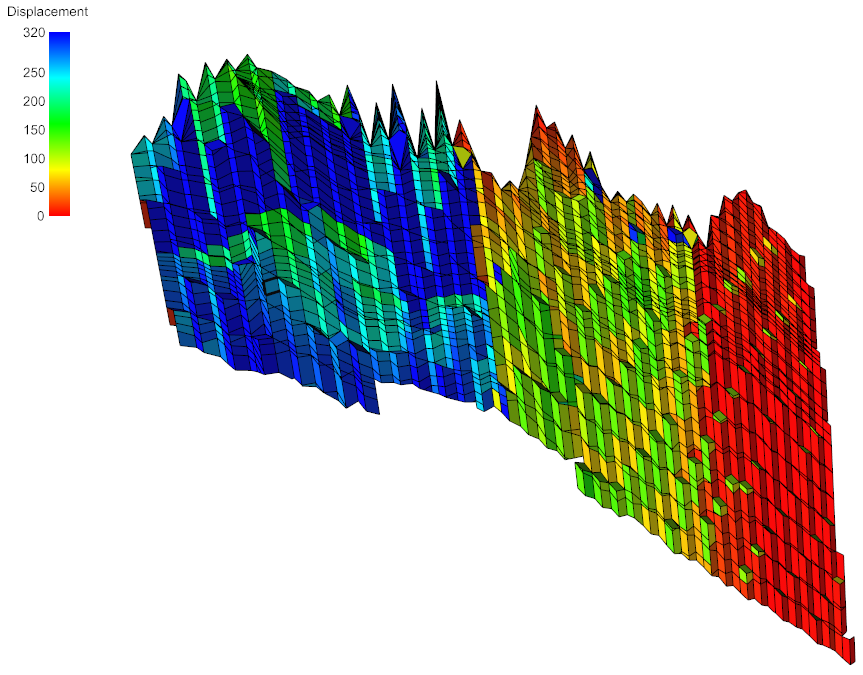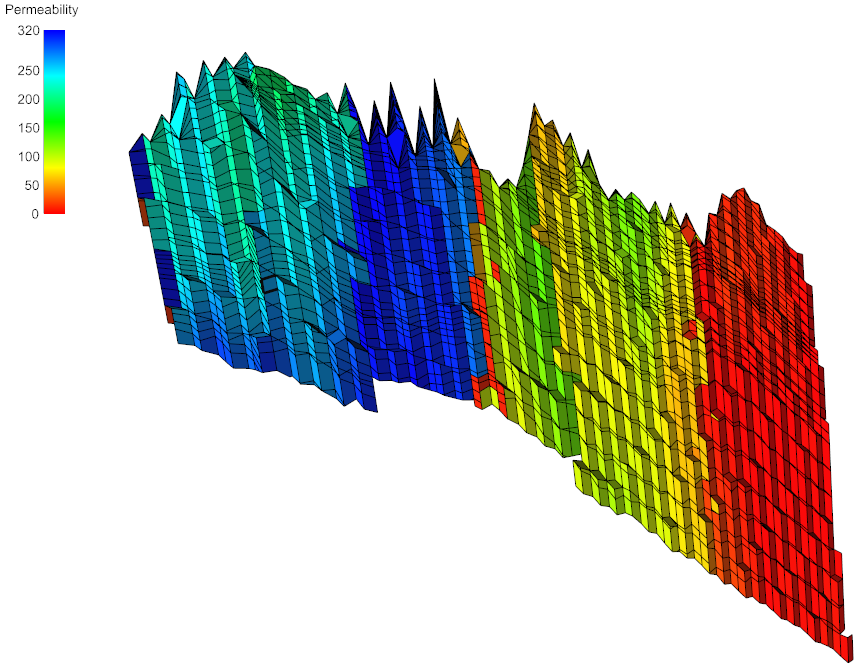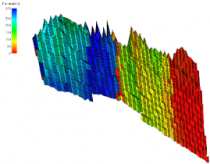Fault Seal modeling
Fault Seal modeling
Fault seal parameters are used to model the fluid flow through faults. This is done by calculating a fault seal parameter based on the lithologies next to the fault. This fault seal parameter is then used to model fault zone permeability and fault transmissibility multipliers which are used in the flow simulation.
The Havana software has supported modeling of fault zone permeability both for seismic and subseismic faults since the 1990's.
Recently we have developed a new algorithm for fault seal modeling in cooperation with Roxar. Instead of calculating the fault seal parameters within the grid, as it is traditionally done, we have developed a methodology for mapping the lithology information from the grid onto the fault representation within the structural model, and then calculating the fault seal parameters within this domain. This gives a much more robust algorithm than the classic approach, and allows for correct handling of stair-stepped grids, erosions and fault truncations.
The first figure below shows the displacement field for a stair stepped fault which is calculated within the simulation grid. The second figure shows the displacement field for the same fault calculated within the structural model using the new approach.


Publications
Per Røe, Heidi Kjønsberg and Camilla Oftebro. Developing a New Algorithm for Calculating Fault Seals Within the Structural Model 74th EAGE Annual Conference and Exhibition, Copenhagen, Denmark, June 2012.


